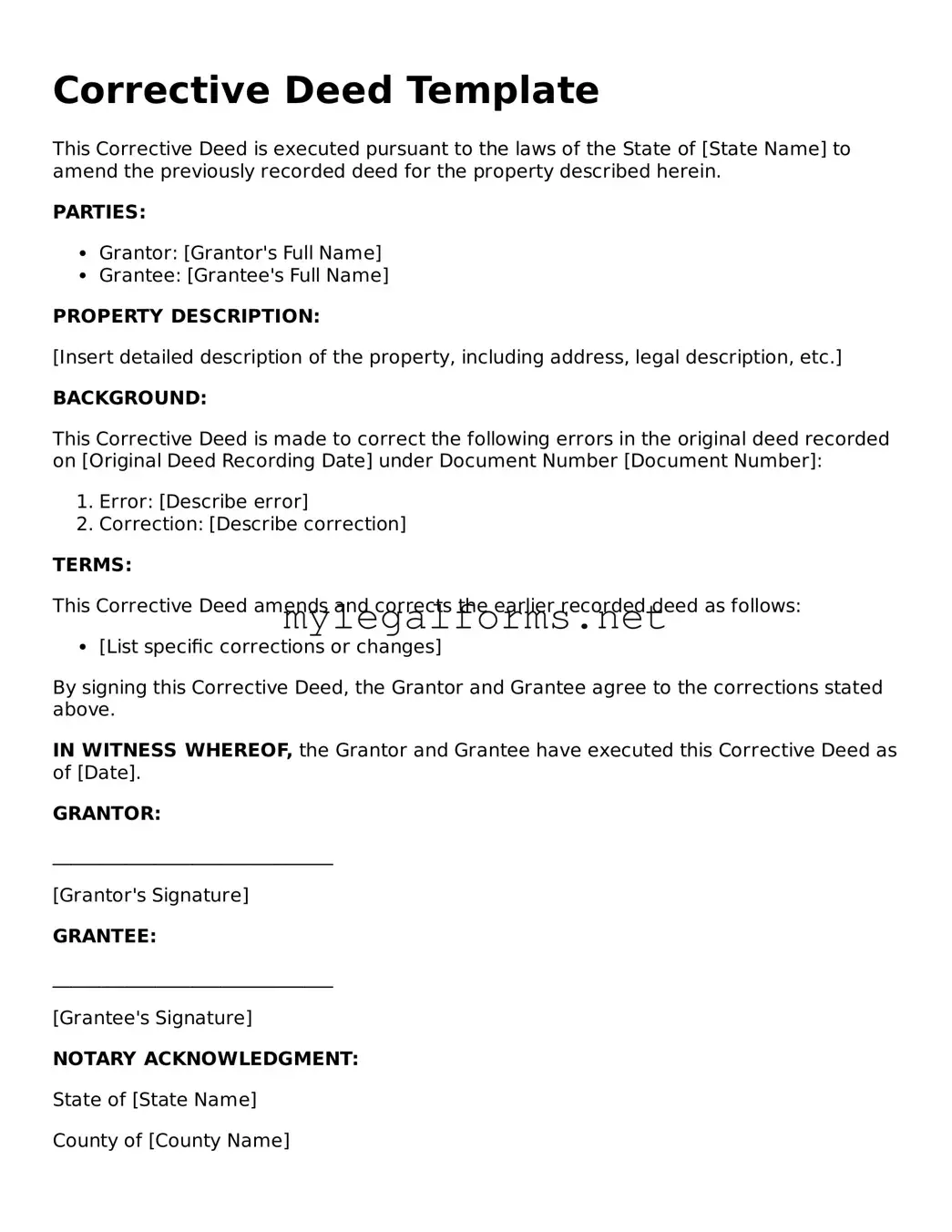Corrective Deed Template
This Corrective Deed is executed pursuant to the laws of the State of [State Name] to amend the previously recorded deed for the property described herein.
PARTIES:
- Grantor: [Grantor's Full Name]
- Grantee: [Grantee's Full Name]
PROPERTY DESCRIPTION:
[Insert detailed description of the property, including address, legal description, etc.]
BACKGROUND:
This Corrective Deed is made to correct the following errors in the original deed recorded on [Original Deed Recording Date] under Document Number [Document Number]:
- Error: [Describe error]
- Correction: [Describe correction]
TERMS:
This Corrective Deed amends and corrects the earlier recorded deed as follows:
- [List specific corrections or changes]
By signing this Corrective Deed, the Grantor and Grantee agree to the corrections stated above.
IN WITNESS WHEREOF, the Grantor and Grantee have executed this Corrective Deed as of [Date].
GRANTOR:
______________________________
[Grantor's Signature]
GRANTEE:
______________________________
[Grantee's Signature]
NOTARY ACKNOWLEDGMENT:
State of [State Name]
County of [County Name]
On this [Date], before me, [Notary's Full Name], a Notary Public, personally appeared [Grantor's Full Name] and [Grantee's Full Name], known to me (or proven to me on the basis of satisfactory evidence) to be the persons whose names are subscribed to this instrument, and acknowledged that they executed the same.
______________________________
Notary Public
My commission expires: [Expiration Date]
